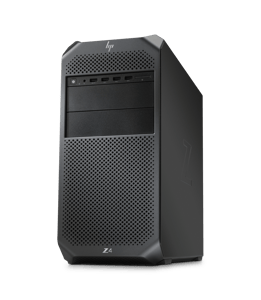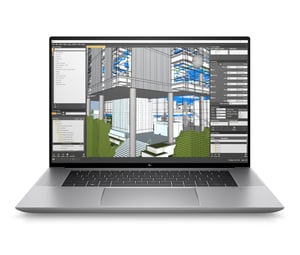AEC software is undergoing a time of powerful transition. Architects are pushing the boundaries of design using a new technology called generative design (GD), which uses artificial intelligence (AI) to explore thousands of design possibilities in the time a human being can explore one. For firms striving to compete more effectively, this capability offers a path to creating better designs faster — but adopting any new technology poses challenges that can seem overwhelming.
To make those challenges less daunting, begin by considering the implementation fundamentals — your goals, project approval, training, and hardware — to get a clearer idea of how you can start using GD in your firm.
Start with the End in Sight
Ensure that you’re building your project on a realistic foundation by defining, as specifically as possible, what benefits you expect to achieve from implementing GD. Ask yourself how GD might affect different components of your business: clients, competitors, areas of specialization, etc. For example, will implementing GD affect how much work you can handle, enable you take on a new type of client, or give you an advantage over competitors who aren’t using the technology? Wherever possible, try to attach numerical estimates to these answers — percentages, hours, and dollars will be much more useful than “more” or “a lot” when it comes time to discuss this investment with management.
Gain Approval with Inclusion and Education
Getting buy-in from all stakeholders is key to a successful introduction of GD, as it is for any new disruptive technology. End users should feel that their needs and interests have been taken into consideration. Senior management needs to understand the value proposition. Taking the time to quantify how much time can be saved performing specific key tasks with the help of GD, can go a long way toward gaining the support of all involved. Read our article, How to Ask for Tech Funding, for more on how to gain management’s support.
Keep in mind that in addition to gaining approval from decision makers within your company to implement new software, hardware, and workflows, you may also need to get another kind of approval — from your clients. Those who are not used to seeing the organic shapes and patterns sometimes created by GD may need some education as to why they look the way they do. Reach out to your clients to explain how the new technology can yield more optimal designs, more quickly than ever before — making your firm the ideal partner to help them achieve their project goals.
Where to Begin? |
|
Use YouTube to get started quickly. Here are just a few to jumpstart your GD knowledge base. Use Autodesk Revit 2022: Generative Design. Autodesk Dynamo: Bentley OpenBuildings: OpenBuildings GenerativeComponents Tutorial Series | Introduction – Interface and Basic Knowledge. McNeel & Associates Grasshopper: Generative design with Grasshopper in BricsCAD BIM l BricsCAD Webinar McNeel & Associates Grasshopper: Generative Design in Grasshopper – Part 1, Parametric model and analysis. McNeel &Associates Rhino: Generative Design in Rhino 3d (+Rhino Inside). |
Get Up to Speed with GD
Once you have buy-in from all the groups in your firm that will be affected, turn your attention to determining training needs.
There are multiple GD solutions on the market, but before you buy one, take a close look at your existing software. Your firm likely already uses Autodesk Revit, Bentley MicroStation, or McNeel & Associates Rhino and Grasshopper — which are the best-known software applications that have GD capabilities.
If you have no hard deadline for implementation, users who are already skilled on the general use of the software can explore the GD capabilities and gradually become familiar with how they work. In contrast, if your team is seeking to implement GD into production workflows as soon as possible, the most expedient option is to undergo training specific to GD capabilities; your software vendor can advise you about training options. There are online courses, both free and as part of a larger license or subscription. Generally these are offered on-demand. The Autodesk ecosystem in particular offers classes from resellers, from companies that specialize in training, and from their regional and global conferences. No matter which platform you use, YouTube is also a great source for ad hoc training.
Firms new to GD often start with small projects, such as a visible partition or an office floor plan. The experience will pave the way for eventually integrating GD into all parts of the project. Using GD tools on a small portion of a larger project does not break the BIM workflow.
Evaluate Hardware and Explore Options
GD and the other new software and data forms driving AEC innovation may enable dramatic results, but they also place intense performance demands on computers. Desktop computers purchased for drafting may not be suitable for these new technologies. GD recalculates algorithms hundreds of thousands of times; how fast they run depends on computer performance.
Make sure your workstation can handle the increased computational workload of GD technology. A computer that has hit its limit and works, but with long delays, creates a workflow bottleneck. Initial use of GD on small projects will also help your team discern if any computers in the firm need to be upgraded. The bottom line is that if a computer’s performance is sluggish when running GD software, it should be upgraded or replaced. Read our article, The Right Technology Solution for Generative Design, for more on your technology needs.
The Next Steps
Innovation is a journey as much as it is a decision. Taking advantage of generative design is no different. With a plan in place – including upgraded workstations as needed – you can turn enthusiasm for a new disruptive technology into a practical workflow improvement.
Recommended Rig for Generative Design
To carry out GD tasks using such tools as Rhino Grasshopper, Project Refinery, and
Generative Design for Revit, Z by HP recommends the:

Z4 Desktop with
• Intel® Core™ i9 processor with 12 cores
• NVIDIA® RTX™ A5000 graphics
• 1TB NVMe storage
• up to 64GB of memory
Click here for more on Z4 Desktop.
 Or the:
Or the:
ZBook Studio with
• Intel® Core™ i7 processor with 6 cores
• NVIDIA® RTX™ A5000 laptop graphics
• 1TB NVMe storage
• up to 32GB of memory
Click here for more on ZBook Studio.


Share This Post